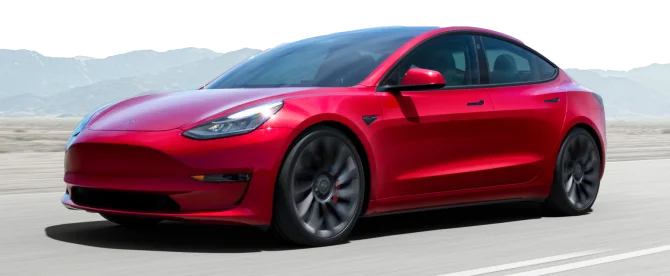Get this deal! Call now.
Speak with a vehicle protection plan specialist and get $300 off any new contract instantly.
Call 866-678-4172
or scan the code below


The April 2025 launch of expanded tariffs on vehicles imported into the U.S. is causing turmoil in the American car market. Reuters reports that about half of the new vehicles sold in the U.S. are assembled outside the country. The Big Three automakers aren’t immune from the issue either.
General Motors imports 46% of its U.S. market vehicles, followed closely at 45% by Stellantis, the parent company of Chrysler, Dodge, Jeep, and Ram. Ford is vulnerable to these challenges, as 21% of the Blue Oval’s models cross a border before reaching dealership lots. Many Asian brands, including Toyota, Subaru, and Mazda, have higher import totals. German automakers Audi, BMW, Mercedes-Benz, and Volkswagen are in the same predicament.
In short, few auto industry manufacturers will escape the impact of a 25% tariff on cars built outside the U.S. In May, President Donald Trump and the White House are set to launch another round of tariffs on vehicle parts manufactured outside the country. These expanded duties will have potentially more significant implications as most automobiles assembled in the U.S. have some degree of imported parts. For example, the venerable Ford F-150 has only 45% U.S.-made components, according to a 2025 report from the National Highway Traffic Safety Administration.
The full effects of Trump’s auto tariffs have yet to be understood or felt, but taking a page from the pandemic-influenced car shortages and unstable market conditions of earlier this decade gives us some insight. We’ll skip the economics lesson for a straightforward look at what these changes are likely to mean for car buyers and vehicle owners.
However, we’ll give you a sneak peek before diving into the details: affordable cars (new and used) will be harder to find or require spending more. In addition, consumers looking to keep their current rides or who have to buy an older used car (because of cost) will turn to extended car warranties for protection. You’ll discover how an auto protection plan safeguards against inflation regardless of what’s causing prices to rise.
Even if you’re not in the market for a new automobile, you’ll want to learn the effects of tariffs on new vehicles (even those made in Canada or Mexico). Why? Because used cars start as new cars. What happens here trickles down to the second-hand market and vehicle ownership in general.
Here’s a look at some different scenarios, any of which could apply in response to the Trump administration’s tariffs:
This storyline restates the obvious: adding a tariff to a product usually translates into price hikes for consumers. In the case of cars, some automakers may absorb some of the duties, but few will be able to bear the full brunt of a 25% increase (or a lesser amount for tariffs only involving foreign-made components). Volkswagen has already advised dealers that newly arriving imported cars will have an import fee added to the window stickers. The exact amount hasn’t yet been announced. Goldman Sachs forecasts that tariffs will cause new car prices to rise $5,000 to $15,000. Keep these numbers in mind because they tie into other scenarios.
Expect some new cars to be pulled from the U.S. market. In particular, vehicles under $25,000 are the likely target. Nissan’s made-in-Mexico Sentra starts at around $22,000 and is one of the cheapest new automobiles available. It’s a low-margin car for Nissan, meaning there isn’t much profit margin to absorb the tariffs.
A $5,000 tariff surcharge turns the Sentra into a $27,000 vehicle with the same starting price as the larger Altima. Plus, buyers of cheap new cars are often focused on affordability. Every $1,000 of borrowed money adds another $20 to the typical monthly payment. In other words, these buyers will want to purchase more premium vehicles or won’t be able to handle the higher costs, reducing demand for budget-friendly models.
Manufacturers may keep production running for more profitable models but possibly at a lower level. For instance, the Chevrolet Silverado 1500 is General Motors’ best-selling vehicle and a cash cow for the automaker. But demand will decline when a loaded $70,000 pickup truck now costs $85,000. Consumers simply won’t be able to afford the higher payments, especially at a time when the average monthly payment for a new vehicle is already a record $737, says Experian.
If you had the misfortune of visiting a car dealer during the height of the pandemic, you likely encountered the dreaded “Market Value Adjustment” to the window sticker. It’s just a dealer’s way of letting you know they’re charging more for a car because they can. These conditions may return in the near term as the supply of pre-tariff cars dwindles. This won’t apply to all dealers, but some will undoubtedly take advantage of the situation.
Manufacturer incentives and dealer discounts were virtually non-existent when vehicle production ground to a halt during the peak of COVID-19. These players didn’t need to lower prices because of the limited vehicle supply. Expect the same if availability diminishes this time around. Plus, automakers’ profits may be diverted toward underwriting some of the tariff costs.
Don’t be surprised if smaller automakers like Mitsubishi, Jaguar, and Land Rover say goodbye to America. All of these brands’ models are made outside the U.S., and there wouldn’t be enough volume of higher-priced cars to justify staying in business here.
Leasing is about predictable resale value, which is almost impossible to determine in the face of rising prices. The last thing an automaker wants to do is underwrite a lease at a higher valuation only to have the rug pulled out from under them if tariffs are later reduced or eliminated. Leasing, which gets shoppers behind the wheel of a new car for less than a purchase, may only be available for vehicles with low or no tariffs. Before the pandemic, car leasing accounted for about 30% of new vehicle retail transactions but dropped to 18% in 2022 when car availability was challenging. Fewer leases mean fewer high-quality, late-model used cars down the road.
 Review the above scenarios, and you’ll see two common themes: fewer new cars and higher new car prices. In these conditions, many consumers will turn to pre-owned vehicles out of necessity or financial concerns. As we learned during the pandemic, such factors will impact used cars: prices will spike, demand will rise, and availability will be an issue.
Review the above scenarios, and you’ll see two common themes: fewer new cars and higher new car prices. In these conditions, many consumers will turn to pre-owned vehicles out of necessity or financial concerns. As we learned during the pandemic, such factors will impact used cars: prices will spike, demand will rise, and availability will be an issue.
In February 2020, one month before the COVID-19 lockdown in the U.S., the average used car sold for about $22,200, according to the CarGurus Used Car Price Index. Two years later, with new vehicles in short supply, the average price increased by $10,000. Today, the typical used car sits in the middle at about $27,000.
If the tariffs are maintained for an extended period, consumers planning to buy a used car in the near future should be ready for a repeat of the market conditions we saw a few years ago during the pandemic.
Protecting a vehicle investment will be even more crucial because the second half of the auto tariff equation involves the May implementation of duties on imported auto parts.
Automotive News analyzed almost 4,000 pages covering which foreign-made components would be affected by tariffs. The result is that nearly everything that goes into a car, from windshield wipers to engines, will be hit with levies if manufactured outside the U.S.
According to The Brake Report, the U.S. aftermarket parts industry (components purchased for a vehicle after it’s been manufactured) is worth about $400 billion, with up to 20% of this total coming from China alone. Most of these parts will be subject to tariffs, making car repairs more expensive. Owners considering keeping their cars to avoid the potential increase in the cost of a new one will be surprised to learn that ordinary maintenance work like new brake pads or replacement spark plugs may be pricier.
From many different perspectives, car ownership is about to get costlier. Beyond the anticipated price increases for new and used vehicles, servicing an automobile may require opening your wallet wider. New tariffs mean more expensive replacement parts, translating into bigger repair bills.
It’s an uncertainty that car owners faced when the U.S. was hit with inflation in recent years. According to CNBC, the cost to fix a car in 2023 increased by 20% over the previous year. Consumers, especially those with older vehicles, looking to be protected against this issue are turning to extended warranty plans.
The key advantage of an extended warranty is predictability. Coverage is secured through fixed monthly payments or a one-time premium. This approach makes budgeting easier versus the financial spikes that occur with a breakdown and surprise repair bills.
In particular, rates for Endurance Warranty plans are locked in once you sign your contract. If the prices rise for covered repairs for any reason, plan holders still pay the same for coverage.
An extended car warranty, also known as a vehicle service contract, has other perks. Ensuring timely repairs promotes longevity, a critical factor during times of higher vehicle costs. At the same time, an extended warranty helps boost resale value because coverage is transferable to a future owner (a small transfer fee may be required). In addition, Endurance customers enjoy 24/7 roadside assistance, rental car reimbursement, trip interruption protection, and the freedom to choose any licensed facility for covered repairs. Arguably, the most valuable perk is peace of mind; there’s less worry about market turmoil and increased prices.
Discover the full value of Endurance Warranty. Request a FREE quote or visit the Endurance online store for instant plan details and to see your price now. Our plan advisors can also help tailor coverage to your needs by phone – just call (800) 253-8203.
The Endurance blog offers information on warranties, vehicle maintenance, DIY advice, and car reviews on Hyundai, Honda, Tesla, and more.

We've received your vehicle information and will contact you shortly with your quote.
— OR —
Start shopping for a coverage plan now.

We're here to make sure you get the most comprehensive EV protection. That's why we've partnered with Xcelerate Auto to offer you transparent and dependable Tesla coverage.
Want us to contact you about XCare coverage for your Tesla?



Your protection is our top priority. Your quote is in progress and you will
receive a confirmation
email shortly.


Speak with a vehicle protection plan specialist and get $300 off any new contract instantly.

Call for $300 off any new plan!
By clicking the button, you consent to Endurance using automated technology to call, email, and text you using the contact info above, including your wireless number, if provided, regarding auto protection or, in California, mechanical breakdown insurance. You also agree to the Endurance Privacy Policy and Terms and Conditions. Consent is not a condition of purchase, and you can withdraw consent at any time. Message and data rates may apply.


Speak with a vehicle protection plan specialist and get $300 off any new contract instantly.
Call 866-678-4172
or scan the code below



Simply fill out the information below and we will follow up fast with your free no-obligation quote.
By clicking the button, you consent to Endurance using automated technology to call, email, and text you using the contact info above, including your wireless number, if provided, regarding auto protection or, in California, mechanical breakdown insurance. You also agree to the Endurance Privacy Policy and Terms and Conditions. Consent is not a condition of purchase, and you can withdraw consent at any time. Message and data rates may apply.

To speak to a vehicle protection plan specialist and get $300 off any new contract instantly
Scan the code below
Dave is an automotive journalist combining a deep passion for cars, hands-on mechanical experience, and dealership insight. His writing primarily focuses on consumer auto advice and enthusiast pieces. A regular contributor to SlashGear.com and other leading automotive platforms, Dave earned his BA in Journalism from The George Washington University.